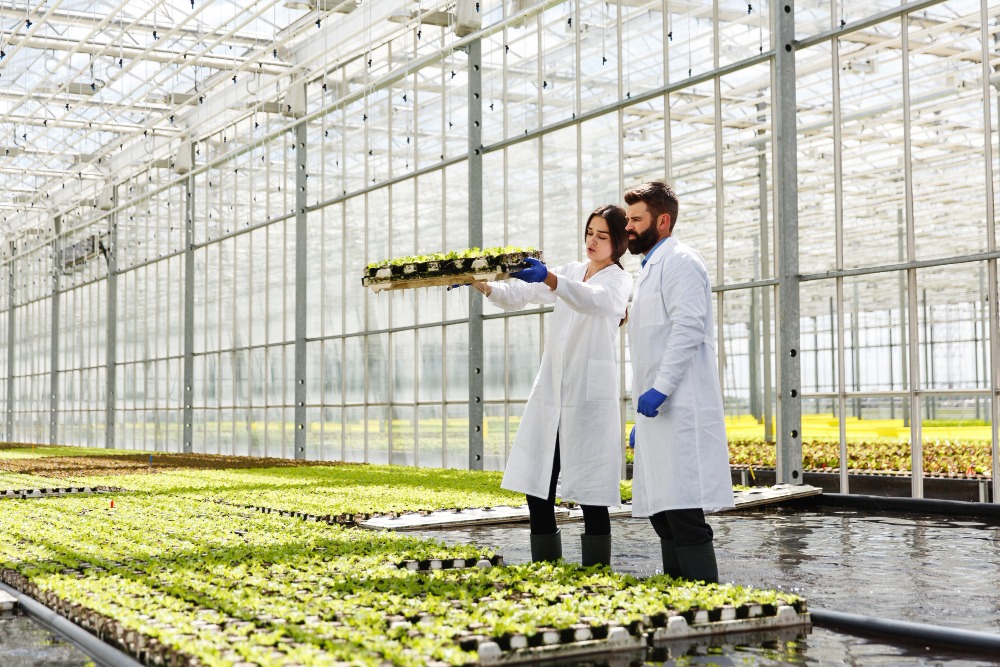Our global population is on the rise, and so is the demand for safe, nutritious food. Traditional agriculture faces significant challenges: limited arable land, water scarcity, climate change, and the vulnerability of crops to pests and diseases. Enter indoor agriculture, a revolutionary approach to food production that’s transforming the way we grow our food. This blog post delves into the rise of indoor agriculture, explores its potential as a sustainable food production solution, and sheds light on the future of farming.
A Looming Challenge: Feeding a Growing Planet
The world population is projected to reach 9.7 billion by 2050. This translates to a significant increase in food demand. Traditional agriculture, while playing a crucial role, faces limitations:
- Shrinking Arable Land: Urbanization and desertification are reducing the availability of fertile land for food production.
- Water Scarcity: Agriculture is a major consumer of water, and freshwater resources are becoming increasingly scarce in many regions.
- Climate Change: Extreme weather events, rising temperatures, and unpredictable rainfall patterns can devastate crops and disrupt agricultural yields.
- Pests and Diseases: Climate change and overuse of pesticides are contributing to the emergence of new and more resilient pests and diseases, threatening crop yields.
A Beacon of Hope: Indoor Agriculture Emerges
Indoor agriculture offers a compelling solution to these challenges. Here’s what it entails:
- Controlled Environments: Indoor farms operate in controlled environments with optimized conditions for plant growth, such as temperature, humidity, light, and CO2 levels.
- Vertical Farming: This space-saving technique involves stacking growing trays vertically, maximizing production within a limited footprint.
- Hydroponics and Aquaponics: These soilless cultivation methods use water or a nutrient-rich solution to deliver essential nutrients directly to plant roots, minimizing water usage and eliminating the need for traditional soil.
- LED Lighting: Advanced LED lighting systems provide the optimal spectrum of light for plant growth, enabling year-round production regardless of natural sunlight.
Benefits of Indoor Agriculture: A Sustainable Future for Food Production
Indoor agriculture offers a multitude of benefits, making it a promising solution for sustainable food production:
- Increased Yield: Controlled environments and optimized growing conditions can lead to significantly higher crop yields compared to traditional outdoor farms.
- Reduced Water Usage: Hydroponic and aquaponic systems use significantly less water than traditional agriculture, making them ideal for arid regions.
- Year-Round Production: Indoor farms are not limited by seasons or weather conditions, allowing for year-round production of fresh, high-quality produce.
- Minimized Pesticide Use: Controlled environments minimize the risk of pests and diseases, reducing the need for chemical pesticides, leading to safer food and a healthier environment.
- Local Food Production: Indoor farms can be located closer to urban centers, reducing transportation costs, carbon footprint, and promoting fresher, locally-sourced food.
Challenges and Considerations: A Path Towards Sustainability
While promising, indoor agriculture faces challenges that need to be addressed:
- High Initial Investment Costs: Setting up an indoor farm requires significant upfront investment in infrastructure, technology, and climate control systems.
- Energy Consumption: Lighting, climate control, and ventilation systems can consume significant amounts of energy. Utilizing renewable energy sources is crucial for sustainability.
- Economic Viability: Balancing the cost of production with the market price of indoor-grown crops is essential for long-term economic viability.
- Labor and Expertise: Indoor agriculture requires specialized knowledge and skilled labor to operate and maintain the complex systems involved.
Collaboration for a Sustainable Future: The Way Forward
Realizing the full potential of indoor agriculture requires collaboration:
- Government Incentives: Policymakers can incentivize investment in indoor farming through grants, tax breaks, and support for research and development in sustainable technologies.
- Advancements in Technology: Continuous research and development can lead to more efficient lighting systems, lower energy consumption, and automation solutions to reduce labor costs.
- Consumer Awareness: Raising awareness about the benefits of indoor-grown food, such as reduced environmental impact and higher food safety, can drive consumer demand.
Embrace the Future of Food
Indoor agriculture represents a significant leap forward in ensuring food security for a growing population. By embracing innovation, fostering collaboration, and addressing the challenges, we can cultivate a more sustainable and resilient food system for the future.
The Future of Farming: A Glimpse Ahead
As we look towards the horizon, here are some exciting possibilities for the future of farming:
- Integration of Artificial Intelligence (AI) and Machine Learning: AI can optimize growing conditions, predict crop yields, and identify potential problems in real-time, leading to more efficient and productive indoor farms.
- Advanced Robotics and Automation: Robots can automate tasks like planting, harvesting, and monitoring crops, reducing labor costs and improving consistency in indoor farming operations.
- Urban Farming Revolution: Indoor farms can be located in urban centers, reducing transportation costs, fostering local food production networks, and creating new opportunities for urban agriculture.
- Personalized Nutrition: Indoor farms could potentially be used to grow customized crops with specific nutrient profiles to cater to individual dietary needs.
The Environmental Benefits of Indoor Agriculture
Indoor agriculture offers a multitude of environmental benefits, making it a key player in the movement towards sustainable food production:
- Reduced Water Footprint: Traditional agriculture is a major consumer of freshwater. Indoor farms can use up to 90% less water compared to open-field farming, significantly reducing pressure on freshwater resources, especially in drought-stricken regions.
- Minimized Soil Degradation: Conventional agriculture practices like tilling and overuse of pesticides can degrade soil health. Indoor farming eliminates the need for soil, protecting soil quality and promoting long-term land health.
- Reduced Greenhouse Gas Emissions: Transportation of food over long distances contributes to greenhouse gas emissions. Local indoor farms can reduce these emissions by bringing production closer to consumers. Additionally, utilizing renewable energy sources can further minimize the environmental impact.
- Improved Air Quality: Indoor farms can control the release of pollutants and utilize captured CO2 to enhance plant growth, potentially contributing to improved air quality in urban areas.
- Biodiversity Conservation: By reducing the need for land clearing for traditional agriculture, indoor farming can help conserve natural habitats and protect biodiversity.
Conclusion
Indoor agriculture is not a silver bullet, but it offers a powerful tool in our collective effort to ensure a sustainable and secure food supply for generations to come. By nurturing innovation, embracing collaboration, and fostering responsible practices, we can cultivate a brighter future where indoor agriculture plays a vital role in feeding a growing planet while safeguarding our precious resources.


